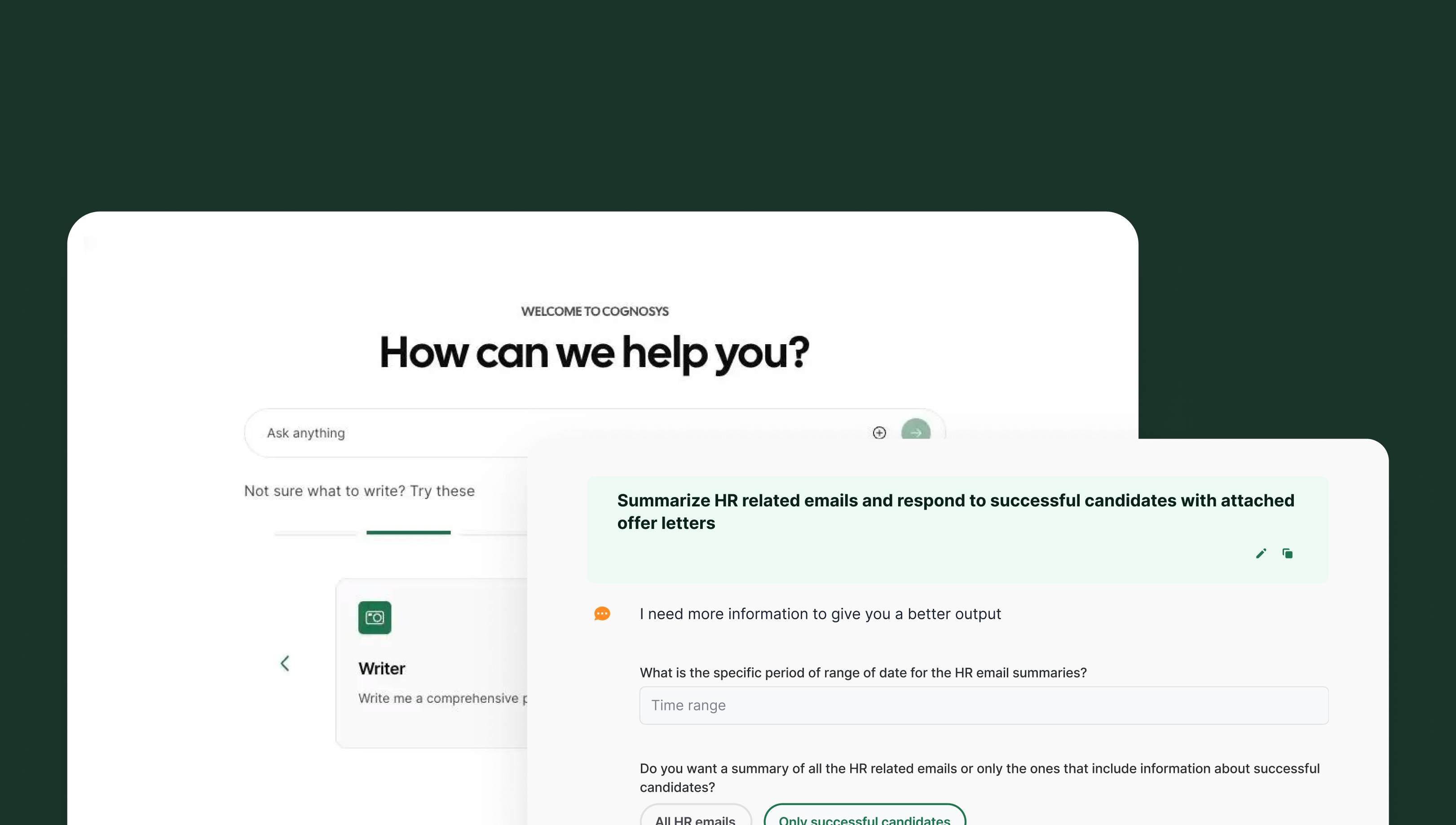Oct 28, 2023
We Rebuilt Cognosys from the Ground Up
How we rebuilt cognosys from the ground up
Sully

Over the past few months we’ve been working and iterating on a new Cognosys. We’ve spent countless hours debugging and coding trying to figure out how we can update the platform, but all roads led to the same conclusion - we had to start from scratch.
The goal was to create a simple and easy to use platform where we could build a strong foundation.
User Intent
Throughout the beta, we learned a lot about how users interacted with modes, agents, tasks and more. Previously, you had to manually select a mode for the system to understand if you wanted to search files, the internet, or code. But we found most users struggled to know when to choose "file" vs "search" vs coding mode.
So the first thing we did was unify all of these into a single input. Our system is now smart enough to automatically detect what you're asking for and pick the right tools accordingly.
This might seem a bit confusing at first, combining everything into one place. But we've seen way better outputs this way. Many beta testers have sent positive feedback that they no longer need to select modes themselves.
Automated Tasks
Previously, when we generated tasks, the system would initially create 3 tasks. After completing those, and depending on how the AI felt, it might've continued down tangents creating more tasks.
There wasn’t an exact science to this approach. While sometimes those tangents were useful, we realized most just went down pointless rabbit holes.
So we changed the entire task creation structure to generate them based directly on your prompts. To determine the ideal number of tasks, we finely tuned our model using specific criteria.
We also made some significant improvements:
Tasks now create 5-10x faster - between 5-10 seconds rather than 45-60 seconds previously in search mode.
You can modify tasks before execution, in case our system missed something. We felt giving you this oversight was necessary since AI is not yet perfect.
Offline + Fully Autonomous
Previously, if you navigated away from a page mid-run, closed the tab, or interrupted the process in any way, your run would immediately stop and all data would be lost. We realized this wasn't a great experience.
So with the new Cognosys, we built it to operate asynchronously from the start. This means the system can now complete tasks and objectives fully on its own, without you needing to babysit it. Even if you navigate away or close the page, Cognosys will keep working in the background.
This also enables exciting new possibilities like scheduled runs. You can now set Cognosys to start tasks at future times, without any effort on your end. The system will autonomously launch and complete the work.
Speed, Sources, Integrations and Models
However, one of the biggest differences we think users will appreciate is the newly designed internet search capability. We felt it was critical for you, as a user, to be able to see exactly what is happening each time an agent runs. You can now view the full queries used and sources referenced. This transparency allows you to monitor system activity and optimize performance yourself.
Additionally, we opted for an intelligent router that selects the absolute best model for your use case, whether that's GPT-4, Claude, Palm, or any future model.
Lastly, we see integrations as a major future expansion point for Cognosys. Services like Gmail, Docs, Notion and many more are on the roadmap. But we first needed to rebuild the core Cognosys foundation to properly support these integrations moving forward.
See all posts